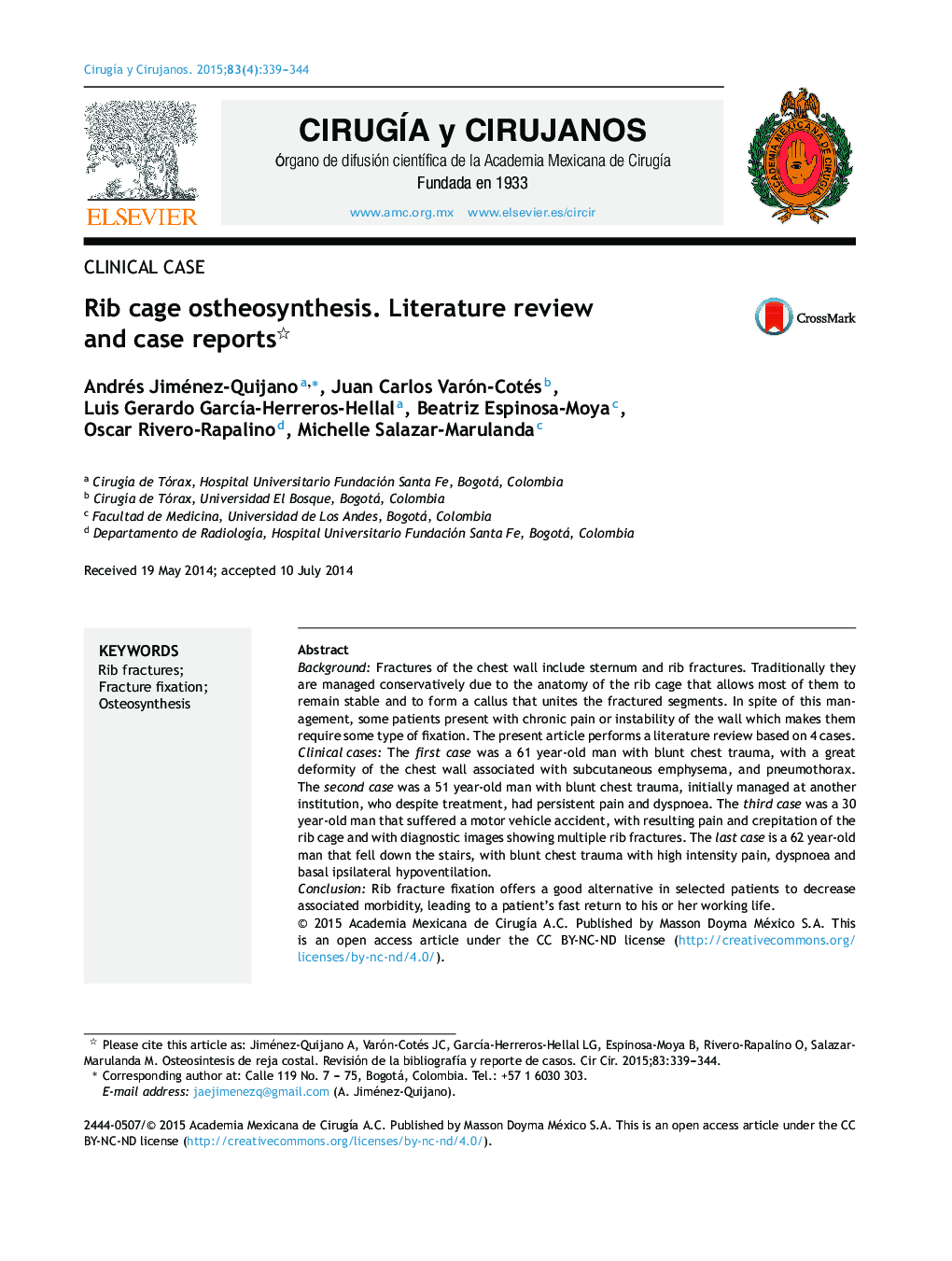| Article ID | Journal | Published Year | Pages | File Type |
|---|---|---|---|---|
| 4283450 | Cirugía y Cirujanos (English Edition) | 2015 | 6 Pages |
BackgroundFractures of the chest wall include sternum and rib fractures. Traditionally they are managed conservatively due to the anatomy of the rib cage that allows most of them to remain stable and to form a callus that unites the fractured segments. In spite of this management, some patients present with chronic pain or instability of the wall which makes them require some type of fixation. The present article performs a literature review based on 4 cases.Clinical casesThe first case was a 61 year-old man with blunt chest trauma, with a great deformity of the chest wall associated with subcutaneous emphysema, and pneumothorax. The second case was a 51 year-old man with blunt chest trauma, initially managed at another institution, who despite treatment, had persistent pain and dyspnoea. The third case was a 30 year-old man that suffered a motor vehicle accident, with resulting pain and crepitation of the rib cage and with diagnostic images showing multiple rib fractures. The last case is a 62 year-old man that fell down the stairs, with blunt chest trauma with high intensity pain, dyspnoea and basal ipsilateral hypoventilation.ConclusionRib fracture fixation offers a good alternative in selected patients to decrease associated morbidity, leading to a patient's fast return to his or her working life.
ResumenAntecedentesLas fracturas de la pared torácica, comprenden fracturas costales y del esternón. Tradicionalmente se manejan de manera expectante, debido a la anatomía de la reja costal, que permite que la mayoría permanezcan estables y formen callos óseos que unan los segmentos fracturados. A pesar de este manejo, algunos pacientes cursan con dolor crónico o inestabilidad de la pared, por lo que requieren algún tipo de fijación. El presente artículo hace una revisión del tema respecto a una serie de 4 casos.Casos clínicosEl primer caso es un hombre de 61 años con trauma cerrado de tórax, con gran deformidad de la pared torácica, asociada a enfisema subcutáneo y neumotórax. El segundo caso es un hombre de 51 años con trauma cerrado de tórax, con manejo inicial en otra institución; pero en quien a pesar de esto persiste el dolor, y la sensación de disnea. El tercer caso es un hombre de 30 años quien sufre accidente de tránsito, con dolor, y crepitación de la reja costal, y con imágenes diagnósticas que muestran fracturas costales múltiples. El último caso es un hombre de 62 años que presenta caída por escaleras, con trauma cerrado de tórax con dolor de alta intensidad, y disnea; en quien se evidencia movimiento paradójico del tórax izquierdo e hipoventilación basal ipsilateral.ConclusionesLa fijación de fracturas costales, ofrece en pacientes seleccionados una buena alternativa para disminuir la morbilidad asociada, y permitir al paciente su pronto retorno a su vida laboral.
